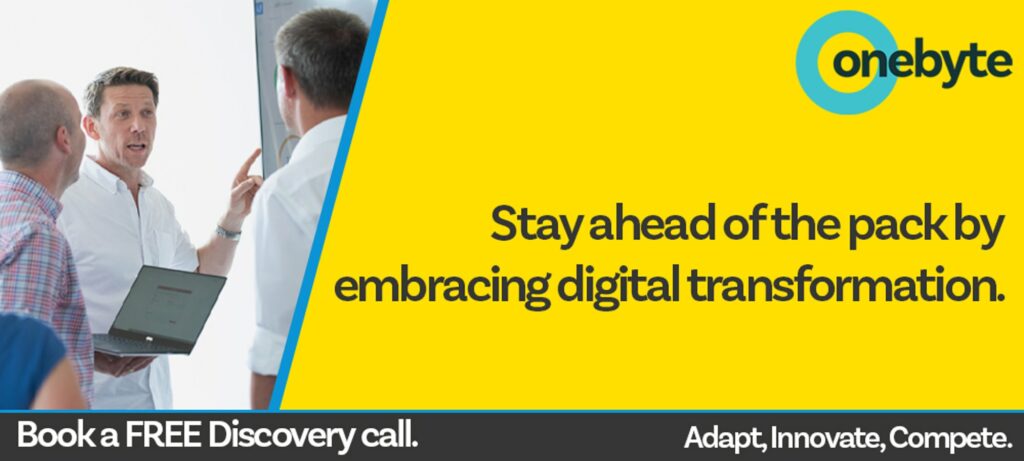Growth rates in the manufacturing sector have been low over the past decade, particularly in the UK where the sector has fluctuated between periods of decline and periods of fairly weak growth. The global pandemic has further rocked the sector, which contracted by almost 30% in the UK this April.
This is a distressing time for businesses across all sectors, but as signs of a rebound start to appear businesses (particularly in manufacturing) are looking for ways to slim down their operations, reduce overheads, eliminate waste and increase productivity in order to stay resilient in an uncertain world.
The manufacturing sector is in the middle of one of the greatest transitions in its history often referred to as the ‘4th industrial revolution.’ Data-harnessing technology is more accessible than ever before; cheap data-gathering sensors and connectivity platforms are allowing companies to gather new streams of data and gain new insights from them in order to empower intelligent decision making.
When properly utilised Business insights/analytics can give manufacturing businesses a huge competitive advantage, cost reduction, supply chain optimisation and productivity gains. These efficiency savings translate into lower prices for customers! As leveraging industrial data becomes increasingly common, companies that fail to adapt will soon find themselves struggling to compete with leaner, more efficient competitors.
Tapping into Industrial data – the challenges
Unifying multiple data sources
This issue is not unique to manufacturing; businesses across all sectors struggle to unify data gathered and held across numerous applications and devices. This problem can be more acute in manufacturing however due to the siloed, standalone nature of Enterprise Resource planning systems, many of which don’t allow for the easy export of data as integration and connectivity was never central to their design. The physical separation of the shop floor, offices and other data sources also presents a slightly greater the challenge in terms of data integration than that faced by other sectors.
Old meets new
Meshing disruptive technologies with ‘legacy systems’ is one of the greater technical challenges when it comes to harnessing industrial data. Such systems include.
- Manufacturing Execution systems
- ERPs
- Production Planning systems
- Machine level control systems
Such systems may use obsolete coding languages, lack an intuitive interface or problems may simply stem from difficulty acquiring documentation.
Data Storage
Anyone with artificial intelligence expertise knows that the value in data often comes from collecting enormous amounts of it. Unfortunately, vast quantities of data have to be stored somewhere. Storage servers can be costly in terms of setup and maintenance and they often occupy a considerable amount of space. Other challenges include:
- Environmental considerations. Servers need to be in a cool, low dust environment away from the damaging effects of electromagnetic radiation.
- Security. Consideration has to be given to physical as well as cybersecurity.
- Cooling costs. Depending on the environment, the energy involved in keeping server stacks cool can be far more than you might imagine.
Presenting Data in a meaningful way
Making sense of data gathered should be a key consideration when developing an industrial data strategy. Think about data that actually holds value and who needs to be able to make sense of it.
Security
Industrial data gathering makes use of individual sensors often referred to as the Internet of things devices (IoT devices). These sensors may be numerous, presenting a large surface area for exploitation by hackers. The individual devices also often use very little computing power and so aren’t able to perform much in the way of security-related tasks. Because of these factors, IoT devices despite being fundamental in terms of implementing an industrial data strategy may also increase the risk of sabotage, leaks or unauthorised access to manufacturing systems with potentially disastrous consequences.
The Solutions
Fortunately, none of the above challenges is insurmountable.
Multiple sources of data can be amalgamated using ‘Product Lifecycle management tools’ so that everyone at all organisational levels are reading from the same script. Unifying data in this way can save time, energy, and resources.
Data storage challenges can be tackled by taking advantage of the off-site, scalable, cost-effective and low maintenance nature of cloud storage services. Such services let you eliminate the setup costs, ongoing overheads and general inconvenience that comes with running on-premise servers.
The data visualisation challenge is met by a vast range of data exploration tools that can help you find hidden value in data by spotting patterns that aren’t discernible to the human eye. Microsoft’s PowerBi is regarded as a frontrunner in the field of data analytics but many alternatives exist. A few includes:
- AnswerMiner
- Knime
- Pentaho
- Rapidminer
Ensuring data security is a daunting undertaking, but risks can be minimised by giving IoT devices access to enough computing power to perform security-related tasks. The alternative is exposing your entire operation to unnecessary risk through a multitude of unprotected devices so a little investment here will definitely pay off.
Conclusion
The 4th industrial revolution is already underway. Companies can either act alone or use the services of the ‘big data’ companies. Investment is required by manufacturers, but it’s not necessarily financial- companies need to be willing to invest time and energy in getting the most out of data. Those that do will survive, but those who fail to will eventually be outpaced and left behind by more intelligent, lean and productive manufacturers who have grown with the benefits of large-scale data insight.
We’re Onebyte
Onebyte is an IT service provider that specialises in providing strategically aligned, compliance-driven, managed IT services to SMEs in London, Norfolk, Suffolk, Essex and Cambridgeshire.
This different approach to managing information and technology is guaranteed to find and eliminate risk, increase efficiency and empower our client’s businesses to leverage technology which will provide a real return on the investment they make in their IT and help realise their vision.

Click here or head to the bottom of the page to book your free Discovery Call.

